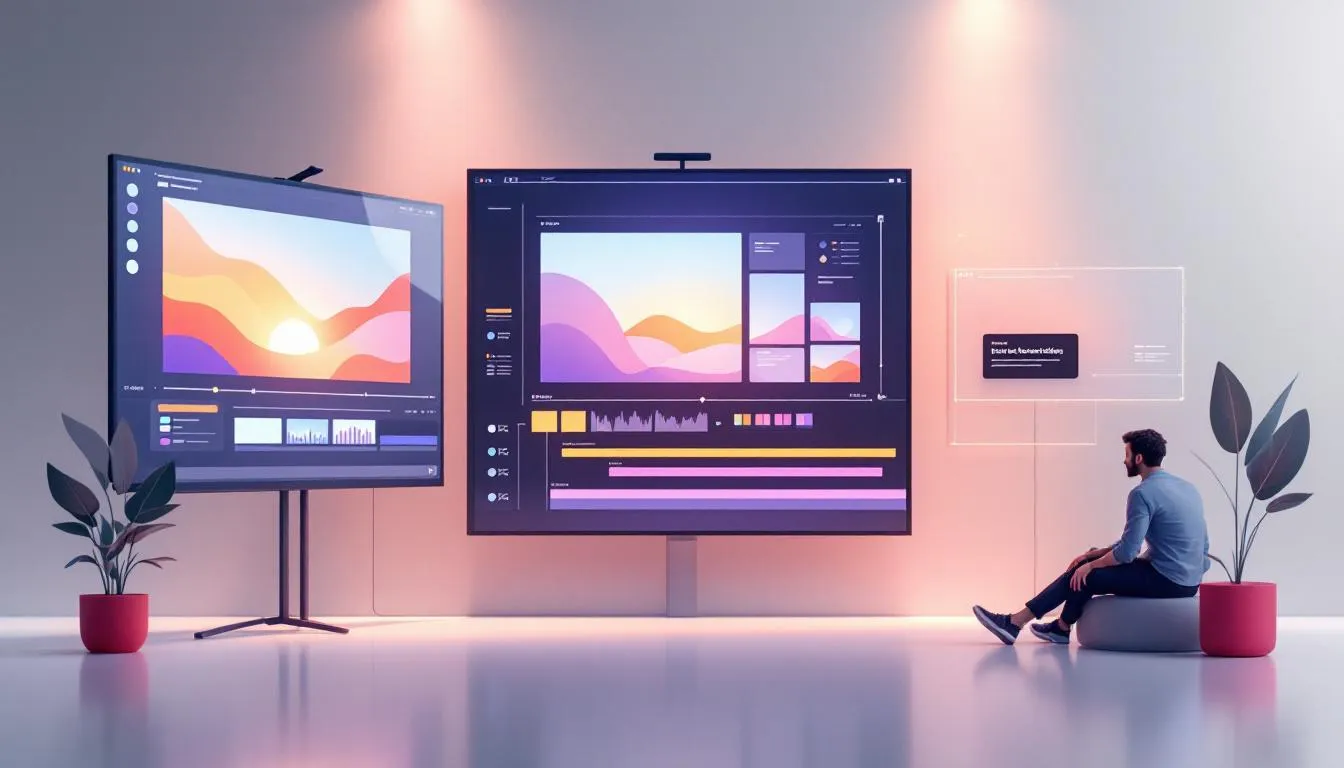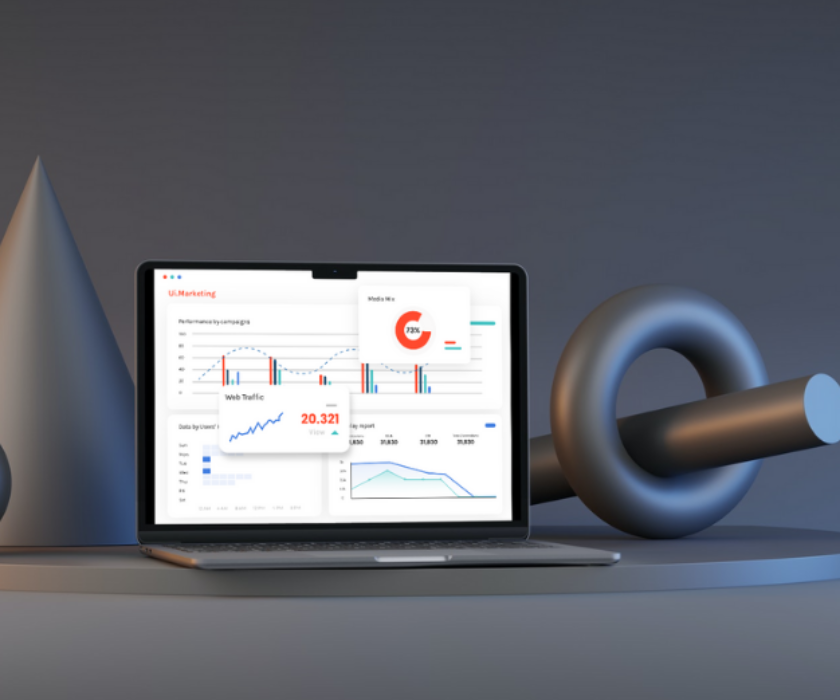Curious about the behind the scenes how to plan a high impact commercial video production? This guide breaks down each step. You’ll learn how to craft engaging concepts, identify your target audience, and manage resources efficiently. From pre-production planning to post-production editing, get ready for a detailed look at professional techniques that create compelling commercials.
Key Takeaways
- Effective commercial video production begins with thorough concept development, including identifying the target audience and crafting compelling story ideas.
- Pre-production planning is essential, focusing on budgeting, resource allocation, location scouting, and talent management to ensure smooth execution.
- Post-production and distribution strategies significantly impact the effectiveness of the commercial, emphasizing the importance of editing, sound design, and targeted marketing efforts.
Concept Development

The foundation of any successful commercial video lies in its concept development. This phase is crucial for generating ideas that will prompt audience engagement and align with the brand message. It’s a blend of creativity and strategic thinking, where brainstorming sessions bring unique ideas to life.
Concept development is where the magic begins. It involves identify the target audience, crafting the story idea, and scripting and storyboarding. Each step is designed to ensure that the final video resonates with viewers and delivers the intended message effectively.
Let’s dive deeper into each of these critical components.
Identifying Target Audience
Understanding your target audience is the cornerstone of effective branding. It’s essential to customize the video’s message and style to resonate with the audience’s preferences and needs. Identifying your target audience allows you to create content that engages and prompts action effectively.
For instance, if your commercial is aimed at professionals in a specific business industry, tailoring the message and style to their interests can significantly enhance engagement and conversion rates. This targeted approach ensures that the commercial speaks directly to the viewers, making them feel seen and understood.
Crafting the Story Idea
Crafting a compelling story idea is where creativity truly shines. Successful brand narratives often highlight the brand itself as a central character in the story, creating a memorable and relatable experience for viewers. Relatable characters and authentic portrayals can evoke emotional connections, making the commercial more impactful.
Brands that incorporate narratives focusing on personal struggles or social issues tend to create a lasting impression on their audience. Visual effects can further enhance storytelling by creating immersive experiences that captivate the audience’s attention.
Analyzing successful commercials reveals elements like emotional resonance and storytelling that drive engagement.
Scripting and Storyboarding
Detailed scripts and storyboards are essential tools in the production planning phase because:
- They help visualize the final video, making the production process smoother and more efficient.
- Scripts detail scenes, dialogue, and actions.
- They ensure that everyone involved understands the creative vision.
Storyboards, shot listing, and 3D visualization software are common techniques for pre-visualization in video production. Meticulous planning of each scene helps anticipate potential challenges and streamline the filming process, ensuring a cohesive and compelling final product.
Pre-Production Planning

Pre-production planning is where the blueprint for the entire project is created. This phase involves defining the purpose and goals of the production to ensure alignment with the overall vision. Discussions about style, budget, and shoot length are crucial for refining the plan and setting realistic expectations.
A solid foundation through scriptwriting and resource assessment is vital for successful production execution. During pre-production, it’s important to be flexible and ready to adjust original plans to align with budgetary constraints.
Let’s explore the key elements of pre-production planning in more detail.
Budgeting and Resource Allocation
Budget planning is a critical aspect of production planning, ensuring the project remains profitable. During pre-production, auditing historical production budgets and identifying areas to cut costs can save money and allocate resources more effectively. Effective project management involves overseeing financials, client relations, and crew management to ensure smooth operations.
Allocating a flexible budget can accommodate unexpected issues that may arise during production. This proactive approach helps mitigate risks and ensures that the production stays on track, both financially and creatively.
Location Scouting
Selecting the right locations is crucial for enhancing the visual appeal and effectiveness of a commercial. Location scouting involves finding and securing locations that fit the script, ensuring the visual elements of the narrative align with the brand message.
Selecting locations in advance helps mitigate risks associated with weather and other external factors. This careful planning ensures that the production process runs smoothly, without unexpected disruptions.
Casting and Talent Management
Choosing the right talent is a crucial component of production services, as an actor significantly influences the video’s overall message and effectiveness. The right actors and settings bring the vision to life, making the narrative more relatable and impactful for real people. This service ensures the best outcomes in production.
Effective talent management involves coordinating casting calls, auditions, and rehearsals to ensure that the selected actors align with the brand’s message and vision. This meticulous process ensures that the final product resonates with the target audience.
Production Execution

The production execution phase is where the magic happens. This is where the ideas and plans from the pre-production phase are transformed into visually stunning commercials that are produced. The execution phase requires strong coordination among various departments to ensure efficient production.
This phase involves actual filming or shooting, and effective planning helps streamline the process, saving time and reducing costs. However, challenges such as logistical issues, unexpected location changes, or performance inconsistencies can arise, requiring quick thinking, adaptability, and effort.
Let’s delve into the key components of production execution.
Managing the Production Team
Coordinating roles and responsibilities among crew members is critical for ensuring smooth operations on set. Live budget tracking allows for monitoring of planned costs against actual costs in real-time, helping to manage crew responsibilities and project execution more effectively.
Effective management of the production team involves clear communication, efficient task delegation, and constant monitoring of progress. This ensures that everyone is aligned with the creative vision and the project stays on schedule, making the job more manageable.
Filming and Directing
The Director collaborates closely with the Director of Photography to achieve the desired visual narrative. High-impact commercials frequently use striking visuals and strong messaging to create an immediate connection with viewers in the right direction.
Finding non-traditional locations can help save money during the filming process, allowing for more creative freedom and unique visual appeal. This collaboration and creativity ensure the final product is both visually captivating and aligned with the brand message.
Sound Recording and Lighting Setup
Quality sound recording is crucial, often requiring separate microphones for each talent to ensure clarity. Effective sound design integrates various audio elements, like dialogue and effects, to support and enhance the visual storytelling.
Sound mixing adjusts various audio components to create a cohesive auditory experience that enhances the story. Similarly, proper lighting setup is essential for creating the desired mood and visual appeal, ensuring the commercial is both visually and audibly engaging.
Post-Production Process

The post-production phase is crucial for refining and enhancing the video material, contributing significantly to the final product’s quality. This phase involves activities like:
- Editing
- Color grading
- Sound design
- Motion graphics These activities help create a polished and engaging final product.
Post-production is where the raw footage is transformed into a cohesive and compelling narrative. Adding motion graphics and music makes the video more dynamic and engaging, ensuring it resonates with the audience.
Video Editing
The initial phase of editing, known as the rough cut, involves assembling all raw footage into a coherent sequence. Video editing involves creating a narrative by selecting and arranging clips, adding transitions, and ensuring a cohesive flow.
Editing is a meticulous process that requires attention to detail and a deep understanding of the narrative structure. By aligning the footage with the intended storyline, editors ensure a smooth flow and engaging pacing.
Sound Design and Mixing
Clear, high-quality sound design is essential in creating an impactful commercial video. Enhancing emotional appeal with a powerful soundtrack and seamless audio mixing is crucial for engaging the audience.
Sound design involves integrating various audio elements, such as dialogue, music, and sound effects, to support and enhance the visual storytelling. Creating a harmonious audio experience through sound design significantly enhances the commercial’s overall impact.
Visual Effects and Color Grading
Color grading is essential for establishing the mood of a video and can dramatically influence viewer perception. It adjusts the video’s color tones to evoke specific emotions and enhance visual storytelling.
Visual effects, when executed effectively, can transform ordinary footage into captivating visuals that hold the audience’s attention. Elevated production value through visual effects reinforces the brand’s message and enhances the commercial’s memorability.
Marketing and Distribution Strategy
A strategic approach to video distribution amplifies its visibility and effectiveness among target audiences. Effective distribution strategies can significantly amplify the reach of video content, leading to higher conversion rates and increased brand visibility.
Using video content effectively can lead to higher conversion rates by delivering attractive and persuasive messages. Let’s explore the key components of a successful marketing and distribution strategy.
Platform Selection
Determining who the commercial is aimed at is crucial for tailoring the message and style effectively. Understanding target audience behaviors allows for strategic platform selection to enhance reach.
A well-thought-out marketing and distribution strategy ensures the finished commercial maximizes its impact in the market. Selecting the most effective platforms involves analyzing where the target audience is most active, be it TV, YouTube, or social media.
Campaign Integration
Integrating video content into wider marketing campaigns enhances the coherence of brand messaging. Strategically integrating videos into broader marketing efforts ensures they align with brand messaging and enhance overall campaign effectiveness.
Aligning video content with other marketing elements enhances overall campaign effectiveness. High-impact commercials can be used across multiple platforms; they adapt seamlessly to various distribution channels.
Monitoring and Optimization
Monitoring performance metrics ensures you’re hitting your KPIs, allowing for continuous improvement and optimization. Employing metrics such as view count and engagement rate helps in evaluating video campaign performance, providing insights into what works and what doesn’t.
QuickFrame’s data tools allow for continuous tweaking of a campaign to optimize performance, inspiring action and boosting ROI. Strategically crafting ads and monitoring their performance enables informed decisions, enhancing the success of video marketing efforts.
Examples of Successful Commercial Videos
High-impact commercials are designed to captivate, persuade, and drive action. Sorah Media Solutions, a company, aims to engage, inspire, and drive results through effective storytelling, turning brand visions into cinematic experiences that resonate with the audience.
Videos foster connections with customers by allowing brands to tell their stories and convey emotions effectively, increasing brand visibility and reaching a larger audience. Let’s explore some examples of successful commercial videos.
High-Impact Brand Commercials
High-impact commercials are crucial for increasing brand visibility and boosting brand awareness among target audiences. These commercials typically feature professional talent, captivating graphics, and testimonials, enhancing engagement and making them more memorable and impactful.
For example, a polished TV commercial with striking visuals and a compelling message can create an immediate connection with viewers, driving brand recognition and loyalty.
Creative Storytelling in Commercials
Successful commercial videos often leverage emotional storytelling to resonate with audiences and create memorable brand narratives. Emotional resonance and strong narratives create lasting impressions, making the commercial more effective.
Innovative storytelling techniques, such as unique character arcs or unexpected plot twists, engage the audience’s attention and keep them invested in the commercial. This creativity and technology ensure the commercial stands out and leaves a lasting impact.
Effective Use of Visual Effects
Visual effects play a crucial role in enhancing the visual appeal and engagement of a commercial video. When executed effectively, visual effects can transform ordinary footage into captivating visuals that hold the audience’s attention. Techniques such as color grading can be used to evoke particular emotions or highlight certain elements within the commercial, reinforcing the brand’s message effectively.
Incorporating high-quality visual effects not only elevates the production value but also ensures the commercial will produce a memorable and impactful experience.
Ready to Create Your High-Impact Commercial?
Bringing your brand’s vision to life through expertly crafted commercial videos can transform your marketing and captivate your audience like never before. Whether you’re just starting with concept development or looking to elevate your post-production process, professional guidance and services make all the difference.
Don’t wait to make your brand stand out with powerful storytelling, stunning visuals, and strategic distribution. Reach out to PS Creative today to start planning your next high-impact commercial video production and take your marketing to the next level.


